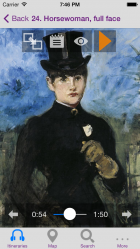
This Spanish painter, who was born in Malaga in 1881, is considered to be one of the leading artists of the 20th century.
The son of an art teacher, he moved to Barcelona with his family when he was a child, where he passed the entry exam into the Fine Arts Academy at the age of just fourteen.
Later, Picasso travelled to Paris a number of times, which enabled him to admire and get to know the work of painters such as Toulouse-Lautrec, Cézanne, Matisse, Derain and Gauguin, who had an influence on his later work. During this period, he was very creative and joined a group of painters known as "Els Quatre Gats" or The Four Cats, who were linked to the bohemian Modernist circle. This was his "Blue Period", with feeble-looking figures, tormented by overwork and poverty.
In 1904, he finally settled in Paris, where his "Pink Period" began, with the circus as its main them. In 1907 he painted "Les Demoiselles D’Avignon", or The Young Ladies of Avignon, who were actually neither young ladies, nor from Avignon. There were in fact prostitutes in a brothel in a street called Calle Avignon, in Barcelona. This work was the starting point for Cubism, which basically involved reducing figures and objects to geometric shapes, devoid of perspective and movement.
His work was inspired in Primitive art, such as Iberian carvings, the Romanesque and Mozarabe styles, and African masks. The Cubist style went through a number of periods: analytical, hermetic and synthetic, depending on how perceptible the figure itself was. Picasso began to abandon Cubism as from the 1920s, when he replaced it with his classical style, although he did return to it from time to time.
The work we are looking at here, Man with a Clarinet, is from the analytical, almost hermetic Cubist style. Notice how the figure is placed vertically, as in a traditional portrait, although the actual shapes are barely perceptible. The drawing has been simplified, using straight lines and curves, and the colour has been applied using the Impressionist technique, but reduced to ochres and greys that are almost Abstract in style.
(c) (R) 2013, MUSMon com S.L.
Text (a) Catalina Serrano Romero
Photo: Portrait of Pablo Picasso, 1962 (a) Source: Wikipedia: Argentina. Revista Vea y Lea (this image is in the public domain because the copyright of this photograph, registered in Argentina, has expired)
Independently produced by MUSMon.com, the audio guide for the Thyssen-Bornemisza Museum offers you a wide-ranging, light-hearted and educational tour of one of Spain’s most outstanding art museums. It contains 90 minutes of commentary, illustrated with over 52 high-quality images, so you won’t miss a single detail during your visit.
We will guide you on your journey through the history of painting. +info




































































